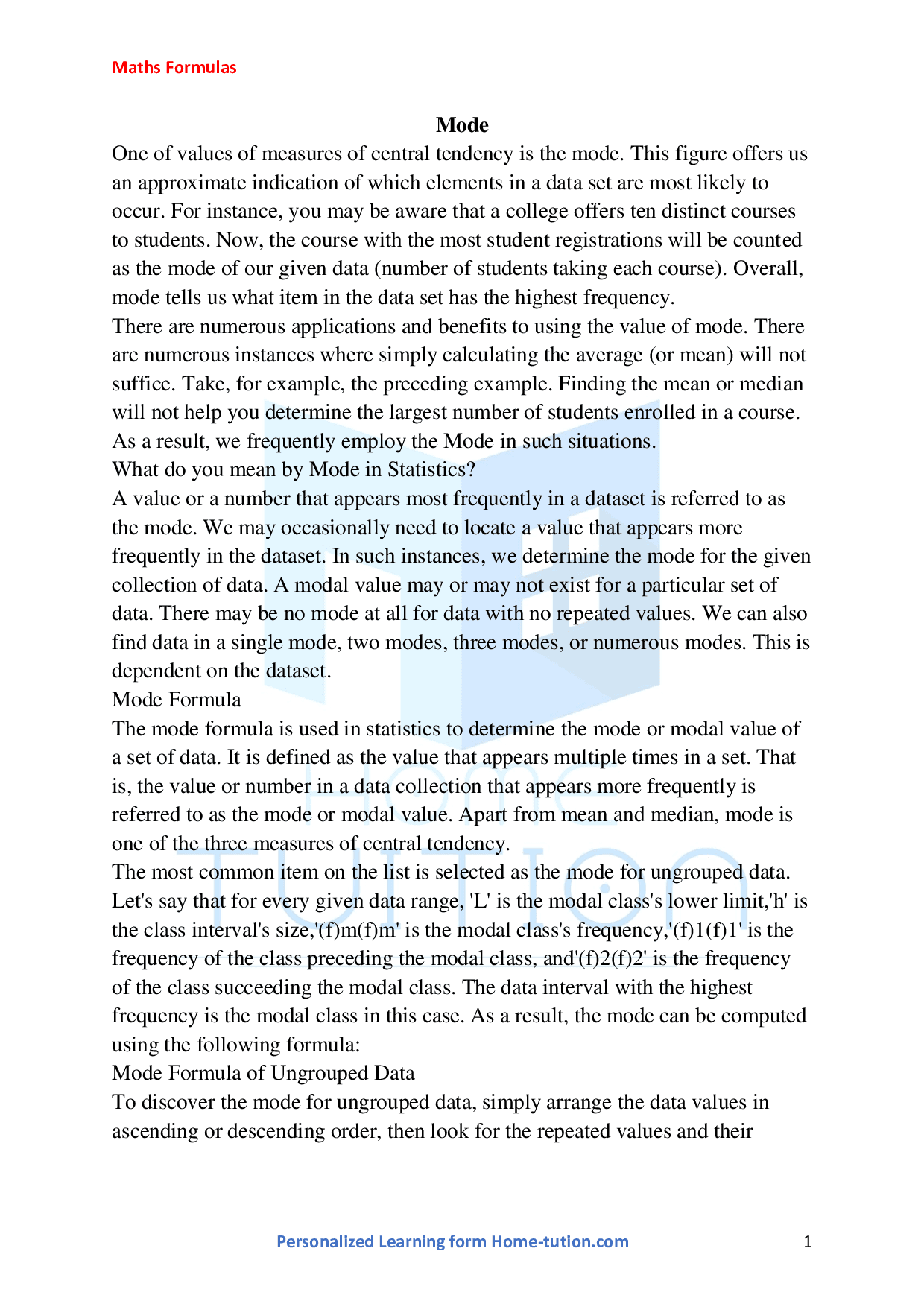About Mode Formulas
One of the values of measures of central tendency is the mode. This figure offers us an approximate indication of which elements in a data set are most likely to occur. For instance, you may be aware that a college offers ten distinct courses to students. Now, the course with the most student registrations will be counted as the mode of our given data (number of students taking each course). Overall, mode tells us what item in the data set has the highest frequency.
There are numerous applications and benefits to using the value of mode. There are numerous instances where simply calculating the average (or mean) will not suffice. Take, for example, the preceding example. Finding the mean or median will not help you determine the largest number of students enrolled in a course. As a result, we frequently employ the Mode in such situations.
What do you mean by Mode in Statistics?
A value or a number that appears most frequently in a dataset is referred to as the mode. We may occasionally need to locate a value that appears more frequently in the dataset. In such instances, we determine the mode for the given collection of data. A modal value may or may not exist for a particular set of data. There may be no mode at all for data with no repeated values. We can also find data in a single mode, two modes, three modes, or numerous modes. This is dependent on the dataset
Mode Formula
The mode formula is used in statistics to determine the mode or modal value of a set of data. It is defined as the value that appears multiple times in a set. That is, the value or number in a data collection that appears more frequently is referred to as the mode or modal value. Apart from mean and median, mode is one of the three measures of central tendency.
The most common item on the list is selected as the mode for ungrouped data. Let's say that for every given data range, 'L' is the modal class's lower limit,'h' is the class interval's size,'(f)m(f)m' is the modal class's frequency,'(f)1(f)1' is the frequency of the class preceding the modal class, and'(f)2(f)2' is the frequency of the class succeeding the modal class. The data interval with the highest frequency is the modal class in this case. As a result, the mode can be computed using the following formula:
Mode Formula of Ungrouped Data
To discover the mode for ungrouped data, simply arrange the data values in ascending or descending order, then look for the repeated values and their frequency. The modal value for the supplied data is defined as the observation having the highest frequency.
Mode Formula of Grouped Data
Mode formula for grouped data is given as,
Mode = L+h[(fm−f1)/{(fm−f1)+(fm−f2)}]
Here,L is lower limit of the modal class, h is size of class interval, fm is the frequency of the modal class, f1 is the frequency of the class preceding the modal class, f2 is frequency of class succeeding the modal class
Mode = I0 + [{(f1−f0)/(2f1−f0−f2)}h]
Here,
I0 is the lower limit of the modal class
h is the size of the class interval
f1is frequency of the modal class
f0 is the frequency of the class preceding the modal class
f2 is the frequency of the class succeeding the modal class
Check out the list of all Maths Formulas on one page prepared by experts.

